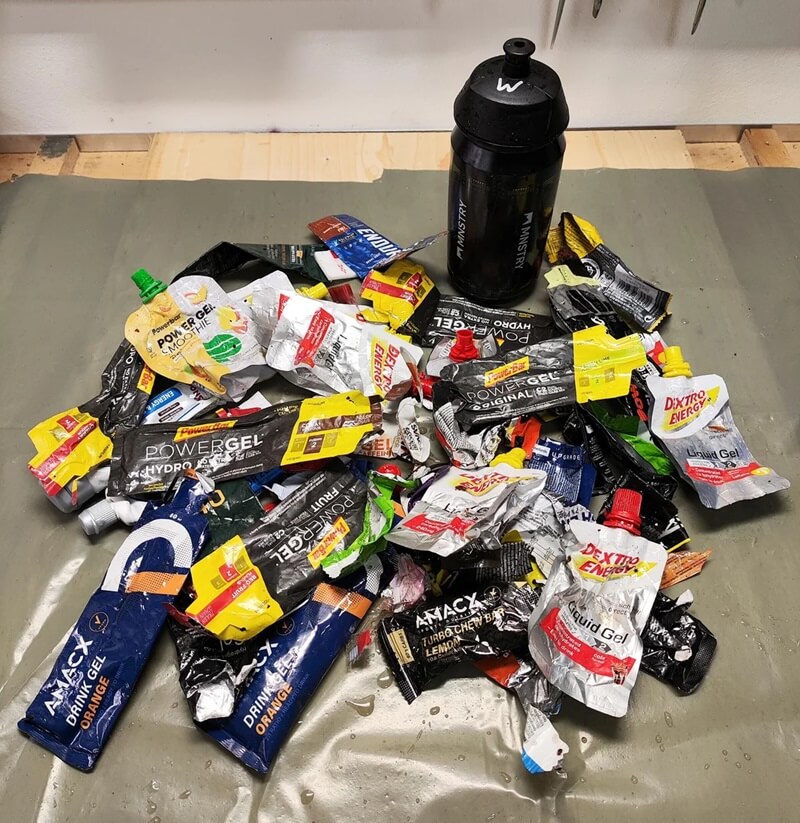Single-use packaging is filling the streets with litter once again, and people are rightly dismayed. A concerned citizen posted their haul of single-use trash produced by a cycling event in their city, and the images are earning a reaction online.
In this post from the r/mildlyinfuriating subreddit, a user shared their displeasure with the amount of trash left over from a local cycling event.

They shared an image containing dozens of gel packets and a full-size hard-plastic water bottle, claiming they found all this trash on a stretch through the forest near their home. However, all of the waste in the photo was accumulated in just one and a half miles of the cycling course, which was surely many times that length.
Single-use plastic packaging and a high carbon footprint are big problems in the athletic community, especially among distance events. Distance athletes regularly express disdain for the amount of waste and litter produced by gel packets, liquid receptacles, and discarded clothing.
Because of their interminable nature and long duration, events like triathlons, marathons, or cycling events require athletes to refuel on the go. Unfortunately, the easiest solution for manufacturers and event organizers involves providing massive amounts of plastic, paper, or styrofoam containers to athletes, which generally turn into litter along the way.
This is a common issue, although many race organizers are trying to improve their practices. For example, the L.A. Marathon sets ambitious targets regarding the cleanup of discarded materials after races.
One study found that marathons have a significant carbon footprint because people sometimes travel long distances to the event, consume resources such as food and other travel necessities while they're there, and produce an immense amount of waste while they are together. This model can be applied to other similar events.
Plastic pollution remains a Great Pacific Garbage Patch-sized problem worldwide and in every area of life. It contributes to vast amounts of pollution and emits significant carbon during the oil-based production of plastics.
However, there are better ways. Continental, a tire company that has also partnered in running shoe production, highlights a few races around the world that take different approaches to keeping it green and reducing waste at events.
In addition, sports stadiums, such as the Mercedes-Benz Stadium in Atlanta, have implemented a zero-waste policy and cut back on single-use plastics, saving $400,000 annually.
Car racing has also become more environmentally friendly. Formula E, a popular car racing league, recently was named the world's 'most sustainable' sport for its efforts to reduce carbon pollution and eliminate single-use plastics at its events.
In the comments, users ran away with the prompt and cycled through a variety of responses, from furnishing solutions to bemoaning the impact of sport on the environment.
One wrote: "I try my best when cycling to have a garbage pocket to avoid this. This is disgusting."
Another suggested: "Contact the people who put on the race on and insist they provide cleanup. If they don't then bring the story to the local press."
Others were grateful for the good nature of the poster. "Thank you for your cleanup efforts!" they wrote.
Join our free newsletter for cool news and cool tips that make it easy to help yourself while helping the planet.









